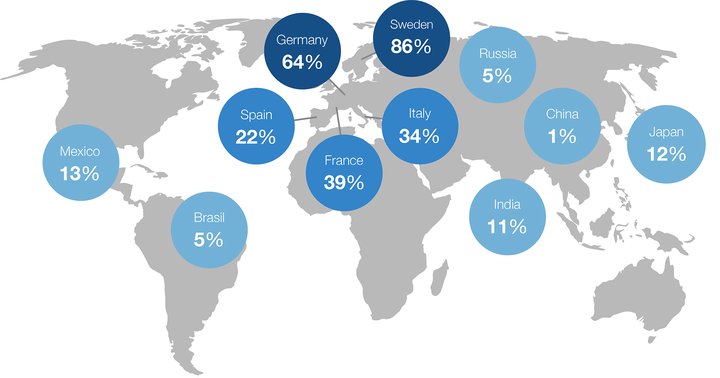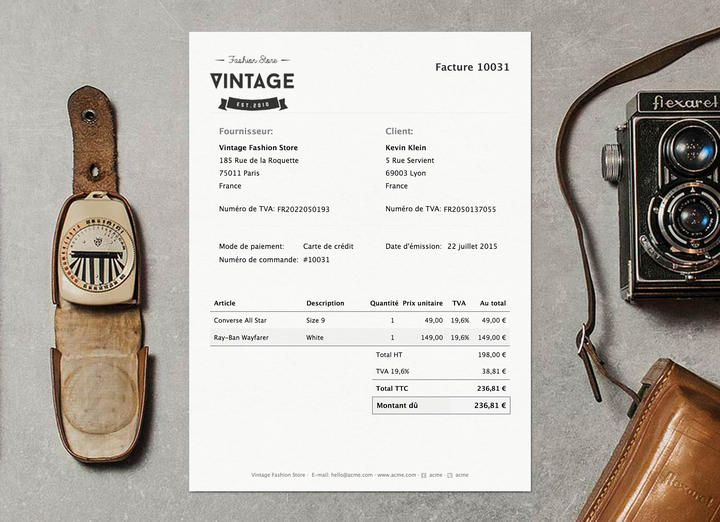5 Tips for Selling Online in Multiple Languages

Language barrier is one of the main reasons online shoppers won't buy from you, even if your product popped up on Google when they searched it. Switching your store into another language definitely opens new doors for your business.
Also, ecommerce is growing rapidly in countries with little percentage of English-speakers. If you start selling in multiple languages, you will build a new customer base and your sales will boost!
English vs. the rest of the world
In the world of ecommerce, English is the most commonly used language. In some countries, like Sweden or Norway for example, where English is widely spoken, people are used to shop online in English. Yet, globally, there are still millions of people who do not speak English. Think of them as your potential customers.
Generally, online shoppers are more likely to drop a coin or two into your shopping cart if they can shop in their own native tongue.
Now, we don’t tell you to translate your store into every language you can think of. Take your time and carefully check where your customers come from to find out what languages could work best for your business.

Good languages to start with are the four major EU languages (with over 570 million internet users): Spanish, Portuguese, French and German.
There's a huge potential on the Asian market, where ecommerce develops fast. Currently, over 820 million internet users speak Chinese and Japanese.
However, before switching your store into these languages, be aware of some cultural differences and a higher level of maintenance. Online shopping is getting all the more popular in countries of Latin America, such as Mexico or Brazil, where there is only a little percentage of English speaking population.
Here are some tips for you to polish up your multi-language store:
1. Don’t skimp on translations
There’s one thing you should take extra care of: don’t skimp on translations. In other words, make sure you do your translations right. Forget Google translator or high-school language class knowledge.
Use a professional service that specializes on translations, for instance Localization Guru. Or you can always ask a native speaker to translate your site's content. A real person that you can talk to is the most convenient option anyway.
2. Create multilingual content
If your store’s content is in multiple languages, search engines will recognize each language as an individual content.
The more SEO friendly your store is, the more dominant position on Google and other search engines it has.
If you have a blog, duplicate each post in a different language. Try setting up two (or more) different fan pages on social media, according to what audience it targets.
3. Speak the language of your customers
If you’re just starting out, English-only support will do just fine. However, as you grow your sales, you should definitely think about giving your customers the possibility to ask for help in their language.
Alternatively, you can outsource your different language support to the respective country. However, having such support is costly, so this is feasible only if your store is already making enough profit.
4. Redirect your customers to the right landing page
If you want to improve your customers’ experience, consider automatically redirecting them to the right language version of your website. Instead of having your customers manually change the language on your store’s homepage, e.g. via flag icons, you can set your store to be displayed in the relevant language automatically, based on the location of the customer.
Several studies proved that automatic redirect to a localized landing page can have positive impact on your sales and revenue by as much as 17 %.
5. Create and send localized invoices
It is essential that you send invoices and receipts in the same language your customer used while shopping in your store. After all, payment details are one of the key aspects of online shopping and your customers must clearly understand what they're paying for, to whom and how much.

Sufio is an invoicing app for Shopify stores that creates and sends localized invoices to your customers based on what language they used while shopping. The app is automated and super easy to use so you don’t need to make any further effort to manage and translate your invoices.
Sufio invoices were translated into over 20 most spoken languages by local accountants.
Sending invoices is also necessary for selling on markets where alternative payment methods, e.g. bank transfers or cash on delivery, are preferred over credit cards. In Japan, for instance, where shopping online is very popular, only about 60% of online shoppers pay for their ordered items by credit cards.
Invoices for Shopify stores in multiple languages
Let Sufio automatically send invoices and receipts in correct language for every order made in your store.
Install Sufio - Invoices in multiple languages from the Shopify App Store